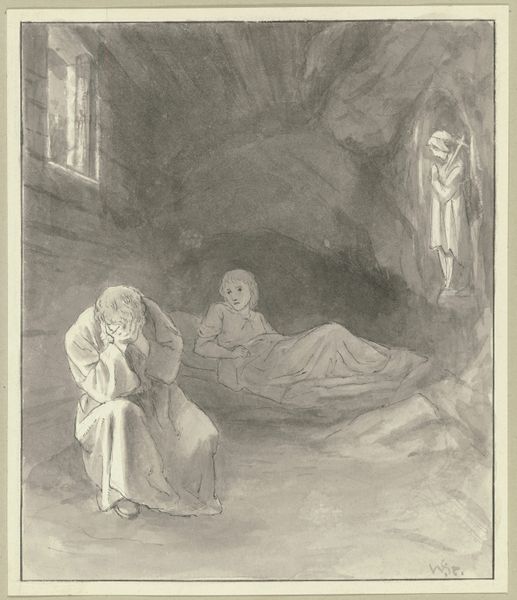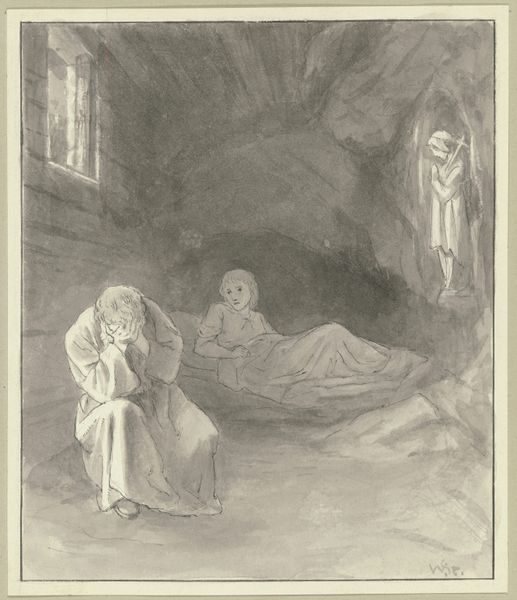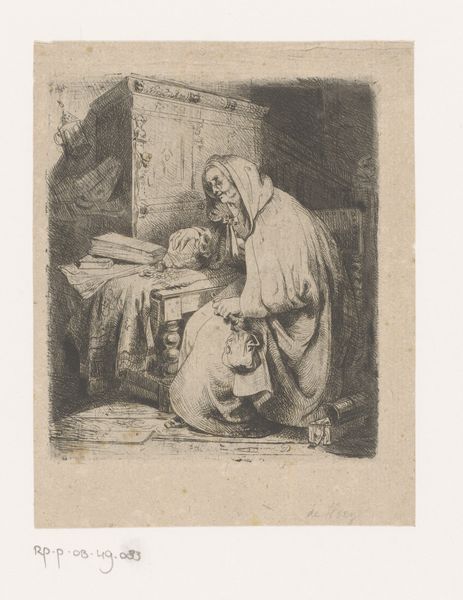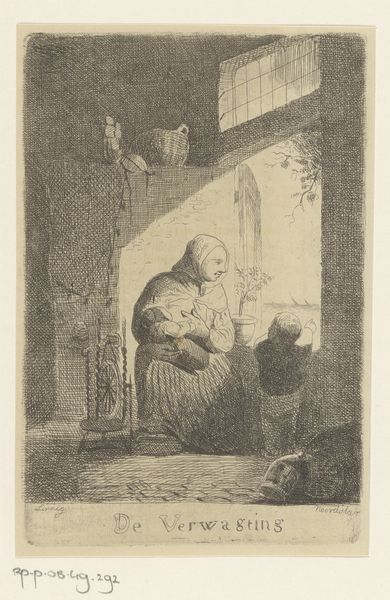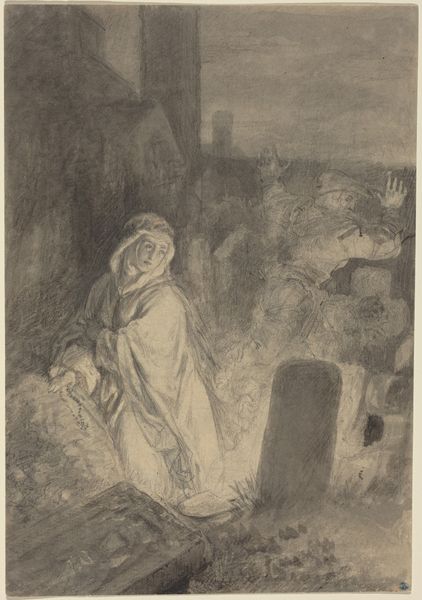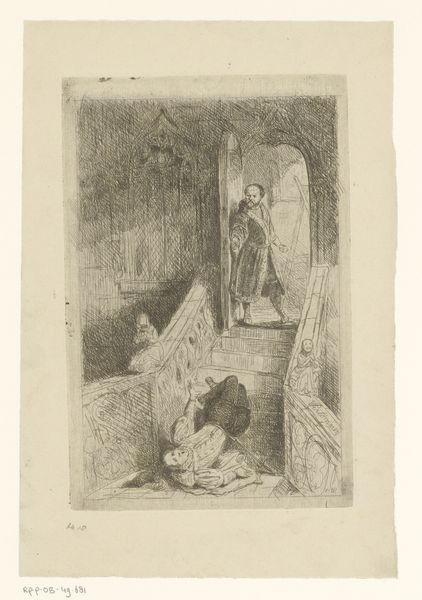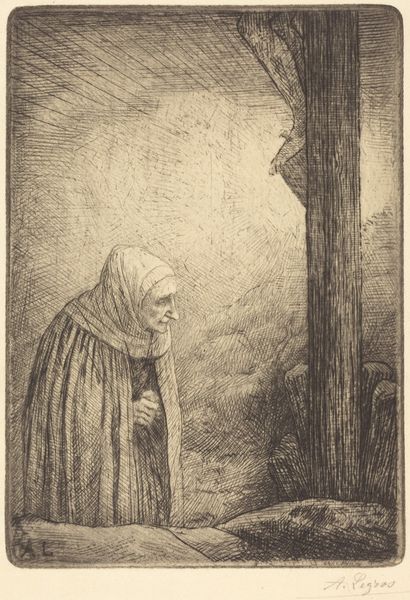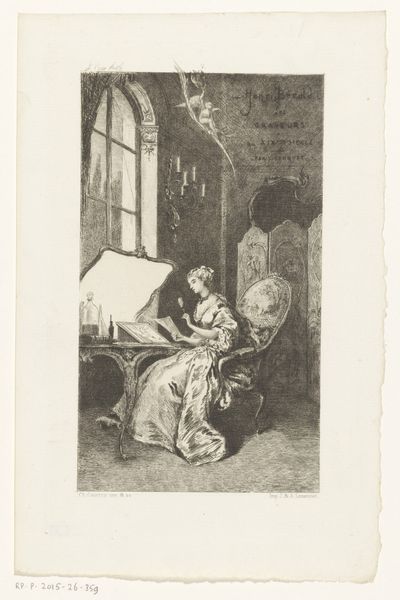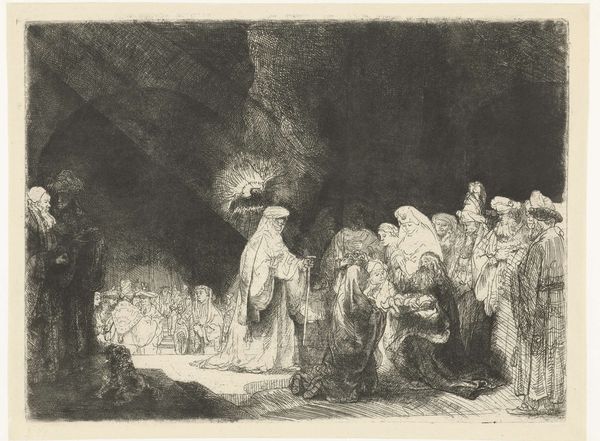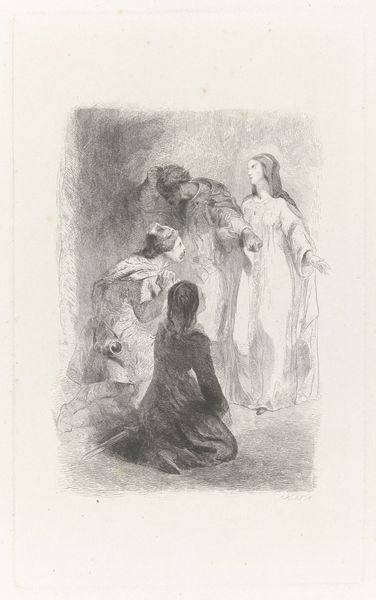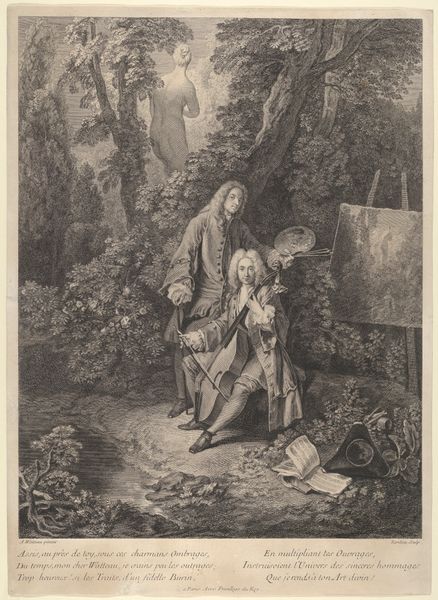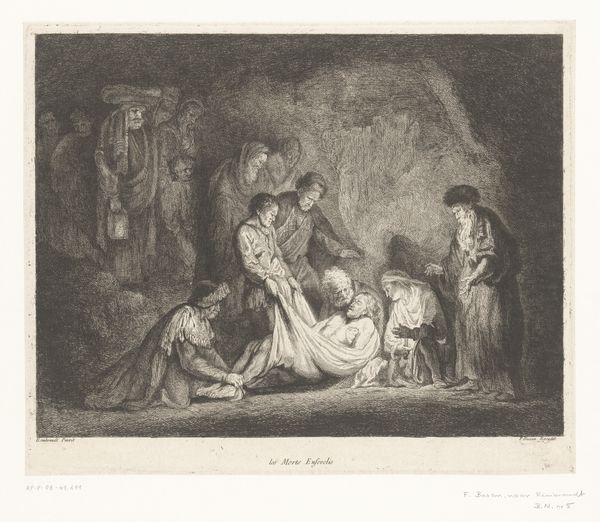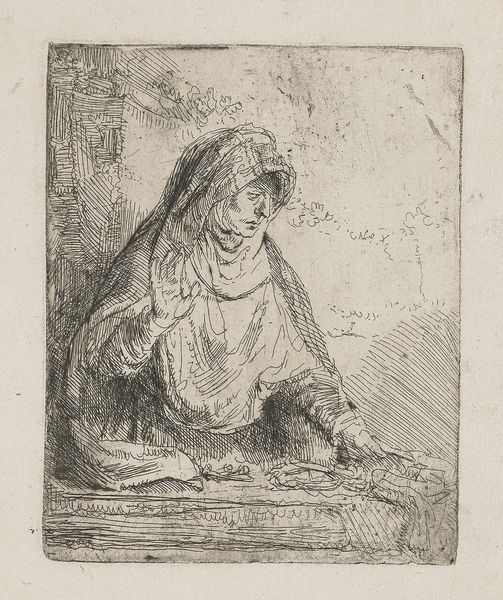
Dimensions: plate: 4 5/8 x 3 3/8 in. (11.8 x 8.6 cm) sheet: 9 1/4 x 7 1/16 in. (23.5 x 17.9 cm)
Copyright: Public Domain
Edgar Degas created this etching, "Dante and Virgil," sometime in the mid-19th century. It illustrates a scene from Dante's Inferno, where the poets enter the gates of hell. Degas, working in France, was part of a generation grappling with modernity, and we see that struggle reflected here. On one hand, there's a clear reverence for the classical literary tradition. But the raw, almost sketch-like quality of the etching breaks from academic artistic norms. It mirrors the social disruption of the time, the rise of industrialization, and the challenge to established institutions. Consider the etching itself as an institutional object. Was Degas critiquing the established art world by choosing a medium like etching, often seen as less prestigious than painting? Perhaps. Ultimately, understanding this work requires us to look beyond the image itself. By researching the artistic debates of 19th-century France, and the social context in which Degas operated, we can better understand the statement he was trying to make. Art, after all, is always in conversation with its time.
Comments
No comments
Be the first to comment and join the conversation on the ultimate creative platform.
